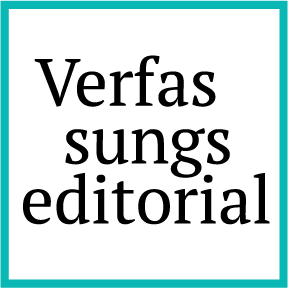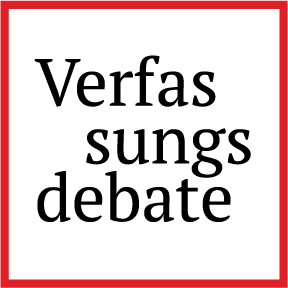Compound Interest
Trump, the Fed, and the Supreme Court
Last week, President Trump purported to fire a member of the Federal Reserve Board, Dr. Lisa Cook. And although he appointed Jerome Powell Chairman of the Federal Reserve during his first term, Trump has since directed constant scorn at Powell and repeatedly threatened to remove him as well. This controversy forms part of Trump’s broader effort to assert sweeping control over the executive branch. It also reveals his particular interest in loosening U.S. monetary policy. Yet his actions carry significant legal and economic risks of their own.
The Federal Reserve’s organization
The Federal Reserve is unusual among federal agencies, in part due to its history. The first two central banks chartered in the Republic were fiercely attacked by populist opponents of greater federal power. The U.S. therefore weathered the Long Depression of the 1870s and various other economic crises without a central bank, which led to a chronic cycle of booms, busts, and bank failures. When this became unacceptable, proponents adopted a relatively circuitous path to avoid reigniting old battles. The Federal Reserve Act was understood as a means of stabilizing private banks and heading off destructive panics. To appease critics of greater federal power, the Federal Reserve was established as a sort of association of regional Federal Reserve Banks, which would be governed by banks in their regions. The Fed thus makes up a highly decentralized body, which is partially controlled by private banks. This institutional set-up is unique among executive agencies – the role private banks take up in determining federal policy within the Federal Reserve would likely face serious constitutional challenge in almost any other part of the federal government.
The Fed sets interest rates through its Federal Open Market Committee (FOMC). The FOMC consists of the seven presidentially appointed governors of the Federal Reserve plus the president of the Federal Reserve Bank of New York (selected by bankers in that region) and a rotating slate of four of the remaining eleven regional Federal Reserve Bank presidents (chosen by private banks in their areas). Because only a simple majority is required to change interest rates, if President Trump secures all seven votes, he would effectively control the FOMC, which has 12 votes in total. He already has two loyal governors from his first term. With another seat opening after a recent resignation, he will soon have a third. Next year, he will also appoint Chairman Powell’s successor. That would give him four of the seven board seats – enough to dominate the Board of Governors but not the FOMC. Plausible proposals to cut interest rates might gain some regional bank presidents’ support. Cuts of the magnitude he has demanded, however, likely would require him to capture every seat on the Board. This is crucial, because it means that Supreme Court will not be able to avoid the issue for long: Trump will likely need to fire two more governors after Dr. Cook.
Presidential appointment power and independent agencies
Reconciling the Constitution’s provisions empowering and constraining the President has been an on-going challenge. Article II, section 1, of the U.S. Constitution provides “The executive Power shall be vested in a President of the United States of America.” Section 2 allows the President to appoint all senior “Officers of the United States”. And section 3 states that the President “shall Commission all the Officers of the United States.” Read together, these provisions make for a strong president. On the other hand, Article II, section 3, also directs that the President “shall take Care that the Laws be faithfully executed”. This authorizes Congress to limit presidential power by law.
Congress has tried to do so in the past by seeking to preserve the independence of executive agencies. During the Great Depression of the 1930s, a conservative Supreme Court upheld a Congressional statute preventing the Democratic President Franklin Roosevelt from removing a Republican member of the Federal Trade Commission (FTC) who opposed his economic policies in the pivotal decision Humphrey’s Executor v. U.S..The Court reasoned that Congress could reasonably seek to protect FTC members from political interference as they applied their economic expertise to problems important to all three branches of the federal government. The Court thus allowed Congress to protect the independence of agencies applying technical expertise to address problems outside the core executive functions by granting Congress the authority to demand “causes” for removal.
Applying this principle, the Court subsequently prevented the President from removing a member of a war claims commission. It held that Congress intended the commission to make fact-based judgments on each claim, which might be defeated if the President could “hang over the Commission the Damocles’ sword of removal”. The Court also upheld restrictions on firing special prosecutors appointed to investigate senior political officials. And it invoked Humphrey’s Executor to sustain limiting the removal of members of a commission establishing guidelines for criminal sentences.
As President Trump’s appointees made the Court more conservative, however, it sought to narrow agencies’ independence. In 2020, it refused to allow limits on presidential removal authority for the single head of an agency (as opposed to members of a governing board). The following year, it similarly rejected restrictions on presidential removal of the single director of an agency overseeing government mortgage financing agencies. By themselves, these cases would not undermine Dr. Cook’s position as she sits on a multi-member board. But they do suggest that the Court’s enthusiasm for agency independence is ebbing.
Trump’s attacks on executive agencies
President Trump is now putting these and other doctrines protecting independent professionalism in the federal administration to the test. In this sense, the controversy is part of President Trump’s broader push to assert absolute control over the entire executive branch of the U.S. Government. Shortly after taking office, he fired tens of thousands of career civil servants with legal security of tenure. The Supreme Court has since abrogated several lower court injunctions on various procedural grounds. When he declared the intention to dismantle the U.S. Department of Education, a cabinet department created and organized under several statutes, several states won an injunction against these actions absent congressional approval, but the Supreme Court blocked that injunction without explanation. He also fired members of the Merit Systems Protection Board (MSPB) and the National Labor Relations Board with statutory security of tenure. In an unsigned order staying a lower court injunction, the Court’s six conservatives insisted that they were not finally deciding the issue but opined that the President was likely to prevail on his argument that restrictions on his removal authority were unconstitutional. The Court similarly allowed President Trump to fire three members of the Consumer Product Safety Commission despite a statute protecting their tenure. Lower courts have held that any challenges to the legality of President Trump’s mass firings of career civil servants must be presented first to administrative tribunals such as MSPB. If the Supreme Court rules similarly, it will effectively insulate these firings from legal review because President Trump’s firing has left MSPB without a quorum and hence unable to act on their complaints.
A Supreme Court swallowing its words
The majority in the MSPB and NLRB cases, however, went out of its way to declare that any such ruling would not apply to the Fed: “The Federal Reserve is a uniquely structured, quasi-private entity that follows in the distinct historical tradition of the First and Second Banks of the United States.” This statement is puzzling. If an agency’s age is what validates statutory protection of its board members’ tenure, the FTC (at issue in Humphrey’s Executor) is only about nine months younger than the Federal Reserve. The Court seems to say that the Fed’s delegation of public power to private businesses is not a constitutional defect but rather somehow a reason to exempt it from the rules the Court applies to other agencies wielding executive power. In any event, if the Court’s purpose was to discourage President Trump from trying to fire Fed governors, it failed. By firing Dr. Cook, the President is effectively demanding that the Supreme Court swallow its words. The Court’s exceptionally accommodating approach to President Trump’s other actions disregarding statutes makes this a genuine possibility.
President Trump gave the Court a small chance to save face by claiming that his firing of Dr. Cook was for cause, specifically purported mortgage fraud prior to her joining the Fed; if he did have cause, that would make her firing permissible under the applicable statute. The flimsy case he has offered to date, however, consists of accusations by one of his political appointees not supported by the purportedly false mortgage application, much less evidence of intent.
Whether the Court will take seriously such thin accusations when obviously made in service of his campaign to force the Fed to lower interest rates remains to be seen. Chief Justice Roberts, writing for the Court, invalidated one of President Trump’s first-term policies because the Administration’s stated rationale was “contrived” and “pretextual”. If the Court holds the Administration to a similar standard now, it will have to decide whether to insist on, and defend, its prior statement that different standards apply to the Federal Reserve than to other independent agencies. It may be tempted to avoid a confrontation by accepting President Trump’s rationale as sufficient “cause” to comply with the statute. That, however, is likely to buy the Court little time as President Trump is clearly determined to assume full control over the Fed. A firing of Chairman Powell or other Fed governors is likely to follow. Although the Chairman Powell will lose his current position next year, his term as governor runs to 2028, and several other governors have consistently supported the Fed’s current policy.
The economic stakes
The Fed controversy also reflects President Trump’s specific interest in loosening U.S. monetary policy. As a someone whose business model depended on heavy indebtedness, Mr. Trump has long had a strong personal interest in lower interest rates. Having just pushed through Congress a massive package of tax cuts targeting upper-income people, President Trump has ballooned the already-large U.S. national debt. By 2034, this legislation is projected to increase the U.S.’s national debt from an imposing 117% of Gross Domestic Product to 126% of GDP. Lower interest rates will significantly lower debt-service costs and hence yield annual deficit numbers that make his legislation look less irresponsible. And having lost his first re-election bid after the pandemic plunged the U.S. into recession, President Trump seems determined to avoid another recession prior to next year’s midterm elections. He clearly believes lower interest rates can achieve that.
But copious research shows that countries’ economies perform better with an independent central bank than one perceived to be beholden to political leadership. An independent central bank can credibly commit to policies such as price stability that reduce investments’ risks. If the central bank’s priorities depend instead on which political faction controls the national government and its electoral needs, its commitments mean little and investments become riskier. An independent central bank also can partially blunt the inflationary effects of irresponsible fiscal policies. And an independent central bank prop up aggregate demand in a downturn when politicians are deadlocked over fiscal stimulus, thus preserving markets for the goods and services resulting from private investments. The Federal Reserve has repeatedly done all these things.
Cognizant of these factors, prior presidents of both parties have gone out of their way to avoid even seeming to criticize the Federal Reserve. The last three Democratic presidents re-appointed Fed chairs selected by their Republican predecessors; Ronald Reagan re-appointed the Fed chair selected by his Democrat Jimmy Carter. And although congressional Republicans were highly deferential to most of President Trump’s appointments during his first term, they drew the line at Fed nominees with views outside the economic mainstream.
Having just won congressional approval of wildly stimulative fiscal policy, one ordinarily would expect the Fed to compensate with anti-inflationary monetary policy. This is particularly true as President Trump’s tariff explosion threatens to kindle inflation. Even his criticism of the Fed was a sharp break with precedent: even Jimmy Carter, whose presidency was destroyed by the Fed’s severe monetary tightening, held his tongue. With President Trump now removing Fed governors who will not bow to his will, investors are likely to interpret future Fed actions as reflecting subservience to the President rather than independent economic judgment.
This could contribute to a reluctance to invest in the U.S. already growing due to volatile trade policies. In addition, should an economic crisis arise, this could rob the Fed of the credibility needed to resolve that crisis quickly and minimize economic harm. A crisis of confidence could be extremely difficult to stem. If the Supreme Court validates President Trump’s actions, Congress would be powerless to restore business confidence by passing new laws bolstering the Fed’s independence. A constitutional amendment could be needed to re-establish limits on presidential power over independent agencies. Negotiating, promulgating, and ratifying such an amendment – which would require three-quarter of the states’ legislatures’ approval – in the midst of an economic crisis could bring its own perils: hold-outs with extortionate demands, hurried drafting that fails to anticipate future evasions, and a downward spiraling economy. But we may end up having little choice.



